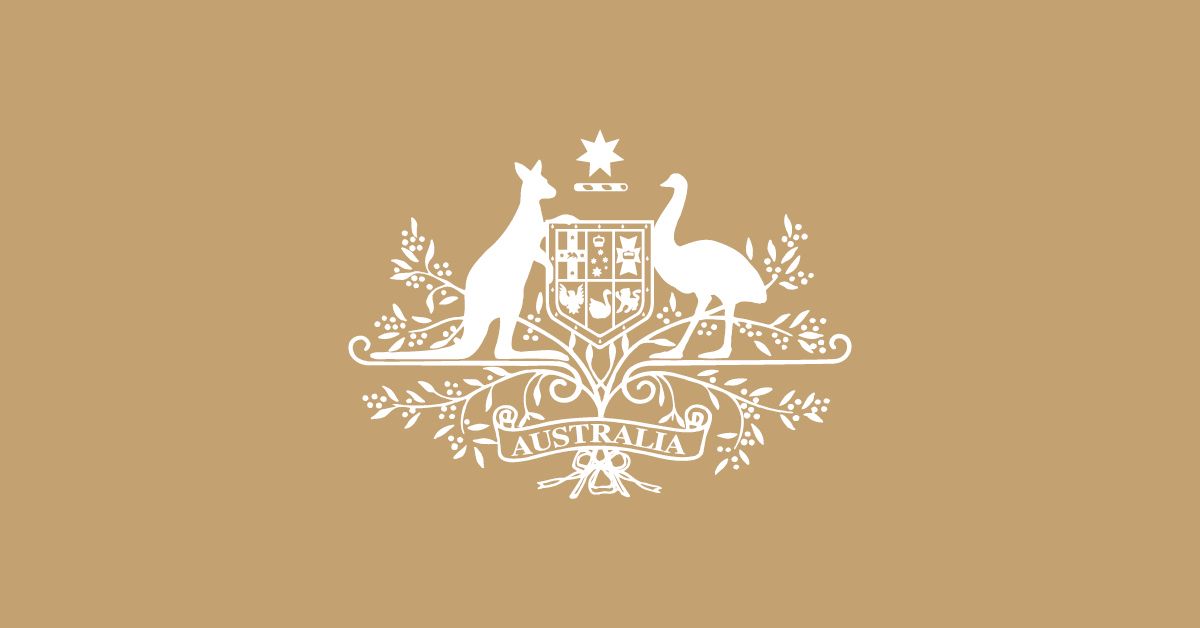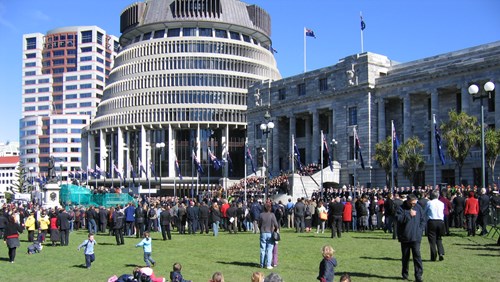
Access, achievement, Accord: The Australian Student Equity Symposium
Shamit, thank you for holding this event here in Bankstown.
And I’m not just saying this because my office is across the road.
This is a special place.
I opened this building just over a year ago with Barney.
It used to be a council car park.
For as long as I can remember it was a car park.
About 40 or 50 spots.
Now it’s this, a 19 storey building, big enough to educate 10,000 students.
But it’s more than just a building, it’s a beacon.
I said when I opened this place, that I remember as a kid growing up in Western Sydney lots of Westfield logos and McDonald’s golden arches, but not a lot of university crests.
They were somewhere else.
And for a lot of my friends, they thought university was for someone else.
That’s why I said to Barney when this place was being built, can you make sure there is a big Western Sydney University sign on the top. And there is.
Barney tells me it’s 15 per cent bigger than they have put on any other building.
And it lights up at night. You can see it for kilometres away.
It might seem funny, but it’s not. It’s important, because it sends a message to every boy and girl and every mum and dad who sees it, that we belong at university as well.
That’s why I call it a beacon.
It is also an example of the sort of change I want to help make possible.
And I hope you can see that in the first stage of our response to the Universities Accord.
The Accord is a big deal.
It’s a blueprint for the next few decades.
Funding it and implementing it is going to take more than just one budget.
We have to do this in stages.
But we have bitten off a big chunk.
29 of the 47 recommendations, in full or in part.
That includes changes to HECS.
The Accord recommended that we set indexation for HECS at either inflation or wages, whatever is the lowest.
We’re doing that, and we’re going further than that.
We’re going to backdate this to June last year.
That means we are wiping out what happened last year and making sure it never happens again.
The Budget wipes out about $3 billion of HECS debt all up, for about three million Australians.
To give you an example, for someone with an average HECS debt of about $26,500, this means that their HECS debt will be cut by about by about $1,200.
It’s an important reform that will make HECS fairer.
HECS indexation has been a big issue for the last 12 months or so.
The campaign to do something about placement poverty has been going for much longer.
In the short time I have been in this job, I have met a lot of students who tell me how hard it is to complete the prac part of their degree.
Some students have to move. Sometimes they have to give up their part-time job. For some students it means genuine poverty. For some it means delaying or never finishing their degree.
The Accord team saw this and recommended that we provide financial support for teaching students and nursing students and social work students.
And that’s what we are doing.
For the first time ever the Commonwealth Government will now provide this support.
These two reforms, the changes to HECS and Paid Prac, help with the cost of degrees and the cost of living.
But the Accord is about more than that.
At its core what it’s about is the cost of kids missing out on university all together.
It says in the world that lies ahead we are going to need a workforce where 80 per cent of workers have a tertiary qualification.
80 per cent have been to TAFE or uni.
And it says we are not going to get there unless we do something about that great big invisible wall that stops a lot of people from poor families, the outer suburbs, and the regions from getting to the front door.
In the Budget we signed up to that target, and the first steps to get there.
Part of that is uncapping FEE-Free Uni Ready courses, right across the country.
Lots of universities offer these free courses.
Not many do it better than Newcastle.
They have been doing it now for 50 years.
One in five people who get a degree from Newcastle University today, start with one of these FEE-FREE Uni Ready courses.
People like Jennifer Baker.
Jennifer was a mum at 19. She worked in hospitality for 10 years and one day saw an ad for one of these free courses in the local paper.
Now she’s got a science degree. An Honours degree. A PhD. And a Fulbright Scholarship.
She’s a computational medicinal chemist.
That’s what these courses do.
They’re a bridge between school and uni to help you get the skills you need to succeed when you get there.
The Accord team recommended we significantly increase the availability of these courses and that’s what we are doing.
We are effectively moving to a demand driven model and funding these places properly.
My department estimates that this will increase the number of people doing these free uni ready courses by about 40 per cent by the end of the decade and double the number doing them by 2040.
That strengthens the bridge between school and uni.
But that’s just the start.
The Accord recommends a new funding system.
A demand driven system for equity students. In other words, uncapping the number of funded places for students from poor families who qualify for the course they want to do.
And a new needs-based funding system so students from disadvantaged backgrounds, students with a disability, Indigenous Australians and students who study in regional Australia get the extra academic and wraparound support that they need to succeed when they get there.
What the Accord called a game-changer for regional universities.
It’s based on the idea that students from disadvantaged backgrounds are less likely to complete their degrees than other students and this can help fix that.
In the Budget we committed to do both of those things and last week I announced an Implementation Advisory Committee to help get the detailed design of these critical reforms right.
I have also heard concerns from the disability community that the Accord didn’t get everything right on disability.
I hear you.
We need to get it right in the implementation and we will work with you to do that.
As you have heard me say before, we are also doubling the number of University Study Hubs across the country, in the regions and the outer suburbs.
They are buildings that aren’t as big as this. But they do something like this.
They bring uni closer to where people live.
The people we need more of at uni.
In that sense they are a beacon just like this.
I announced the locations of the next ten Regional University Study Hubs a couple of weeks ago.
Everywhere from the Pilbara to East Arnhem Land to King Island off the coast of Tassie.
And applications for the 14 Suburban University Study Hubs will open soon.
This is all part of the first stage of our response to the Universities Accord.
But as I said a moment ago, reform here is bigger than one Budget.
It’s bigger than one term of Parliament.
It’s bigger than one Government.
It’s a national project.
That’s why we are also establishing an Australian Tertiary Education Commission.
To stay the course, to drive reform, to help us reach that nation-changing target – no matter who the Minister for Education is.
I have said a number of times we are not going to fix equity at university if it just happens at the university gate.
We have got to reform every part of the education system.
Make every part of it better and fairer.
And that’s what I am trying to do.
Here’s what worries me most.
The number of kids finishing high school is now going backwards. In the last seven years it’s dropped from 85 per cent to 79 per cent.
In public schools the drop is even bigger, from 83 per cent to 73.6 per cent.
And remember this is happening at a time when we need more people to finish school.
Where we are setting a target for not just 80 per cent of the workforce to finish school, but to finish TAFE or university.
A big part of hitting those Accord targets is about fixing this.
That means fixing funding for public schools and tying it to real reform.
Those negotiations with the States are happening right now.
I have done a deal with WA and the NT to get them to 100 per cent of the Gonski funding level.
That involves the Commonwealth chipping in and them chipping in.
I am still negotiating with the other States.
All up, I have put $16 billion of additional investment for public schools on the table.
To put that into perspective, that will be the biggest investment from the Commonwealth in public schools that has ever been delivered.
We can do this. We can turn this around. But the States will need to chip in too.
And we need to tie this funding to reform.
To reforms that will help kids who fall behind to catch up, keep up and finish school.
Reform also doesn’t start here, at the school gate. It starts before that.
Just up the road from here is Chullora Public School.
Last year 70 kids started kindergarten there. The year before only two of those children were in early childhood education and care.
Forget about falling behind, a lot of those children start behind.
They are playing catch up from the day they start school.
In just over a month, we will receive the Productivity Commission’s Final Report on early childhood education and care.
Its draft report made the point that its kids in the communities like where we are today who are the least likely to go to early childhood education and care and are the most likely to benefit from it.
That’s why I’m glad this event is here.
As I said this is more than just a building, this is a symbol of the education system I want to build.
A better and a fairer education system.
It will take years to build, but last week we laid some of the foundation for it.
And if we get this right, we don’t just change the lives of individuals, we change the lives of their kids and their kids.
The impact is intergenerational.
It changes communities.
It changes countries.
We are all here because we care about equity. About fairness.
But the truth is, if we want to see what inequity really looks like, it’s not just about the number of people who go to university or the number who finish school or go to early education and care.
It’s even more basic than that.
It’s the number of years you are likely to live.
In Vaucluse – 36km east of here – the average life expectancy is 86.
In Mount Druitt – 36 km north-west of here – it is 70.
16 years less.
The average person in Mount Druitt lives 16 years less than the average person in Vaucluse.
In the same city.
About an hour apart on a good day.
That’s what inequity really looks like in its most awful form.
Education can’t change everything.
But it is the most powerful change-maker in this country.
Two years ago tonight, the Prime Minister took to the stage, not far from here, at the Canterbury-Hurlstone Park RSL.
He spoke to the nation. He thanked them for the trust they’d placed in him.
And as he ended his speech, he talked about what Labor Governments do.
What they have always done.
He said they open the door of opportunity for more Australians.
And he promised that he would open it a little bit wider.
That’s what we are doing in the Accord, and in the Budget. Opening that door a little bit wider.
It’s education that does this more than anything else.
It makes us a fairer country, and a better one.
And helps to turn the country that lives in our imagination, into something real.


